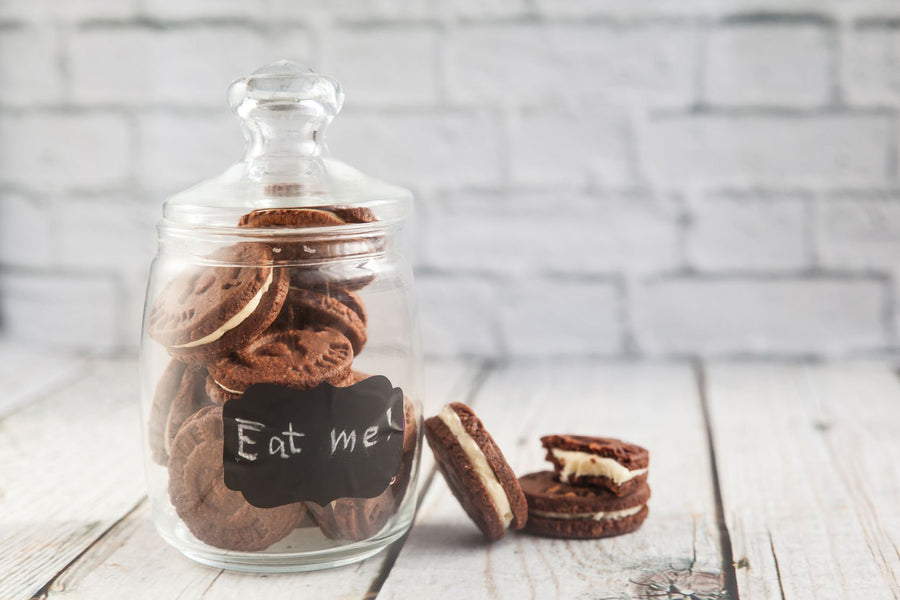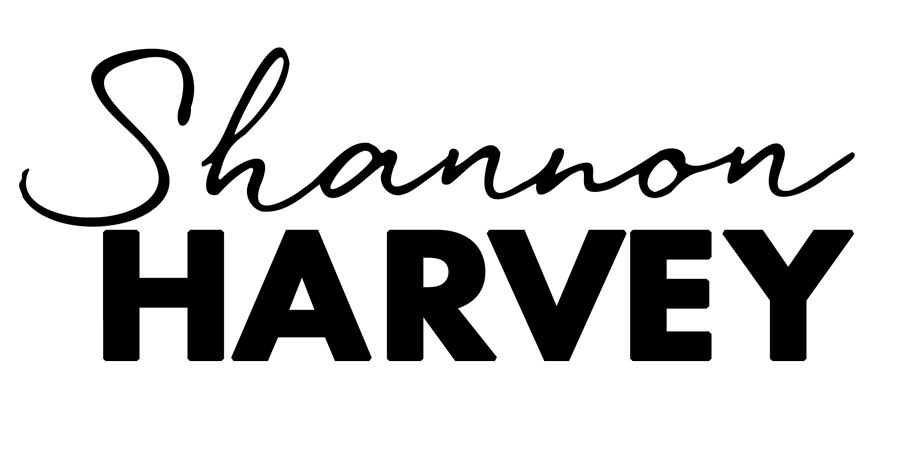
As I sat down to write this blog post, a voice interrupted me. “Shannon, Shaaaanon…,” it called sweetly. I ignored it and delved into reading a scientific paper that I was interested in. After a few minutes the voice started again, this time more adamant, “Shaaaaaaaanon!” Again I ignored it and kept reading until the voice grew so pushy that I had to give in. The voice was coming from the block of dark chocolate in my pantry. It had little bits of crunchy caramel through it and it insisted I eat a piece. So I did. (Well, three pieces actually.)
I know I’m not alone in my struggle to resist food which is less than optimal. In fact, when I sent out a survey to readers of this blog, one of the most common challenges respondents said they faced was resisting unhealthy food. I completely understood one reader’s response who wrote that her problem was “kicking sugar” then added, “she says, completing this survey with an open block of Lindt Sea Salt caramel chocolate.”
The fact that we should all eat a healthy diet isn’t really news. There’s little doubt that diet is one of the most important influencers of our health. We all know we should eat more fruit and vegetables and minimally processed whole foods, and avoid junk. And yet we don’t. If you look at a typically Western diet, many of us are eating excessive amounts of cheap, nutritionally-deficient, low-quality food. Just over one-third of American children and adolescents eat fast food every day, which is alarming when you consider that recent research, done on mice by researchers at the University of New South Wales, demonstrated that eating a poor diet that includes things like meat pies, cakes, and cookies even three days a week can change the balance of bacteria in your gut and lead to weight gain and poor health. (More on gut bugs and health here, here and here.)
As a health journalist with a chronic health condition which is worsened by unhealthy lifestyle behaviours, I’m especially interested in understanding this divide between what we know we should do and what we actually do. As I’ve written about before, one of the problems is that we rely on willpower and self-control as a central strategy, but unfortunately these will only have a small impact on successful healthy behaviour change. Humans are complex. On the plus side, researchers are proving that the solutions don’t have to be.
 One of my favourite health behaviour experts is Brian Wansink, a Professor of Marketing and the Director of the Food and Brand Lab at Cornell University, who I recently interviewed for my book and podcast series. (Listen below.) Wansink and his research team are dedicated to studying why we eat what we eat and how triggers around us, such as people, packages, dinnerware, product names, labels, lights, smells, distractions, and containers, can unconsciously influence what we put into our mouths. For example, in a 2015 study of 497 diners across 60 restaurants Wansink found that patrons were four times more likely to order desserts if they were served by an overweight waiter.
One of my favourite health behaviour experts is Brian Wansink, a Professor of Marketing and the Director of the Food and Brand Lab at Cornell University, who I recently interviewed for my book and podcast series. (Listen below.) Wansink and his research team are dedicated to studying why we eat what we eat and how triggers around us, such as people, packages, dinnerware, product names, labels, lights, smells, distractions, and containers, can unconsciously influence what we put into our mouths. For example, in a 2015 study of 497 diners across 60 restaurants Wansink found that patrons were four times more likely to order desserts if they were served by an overweight waiter.
What I find really useful about the research coming out of Wansink’s lab is that the findings are easily applicable to our every day lives. A 2015 analysis of 112 studies that had collected information about healthy eating behaviours found that most healthy eaters made healthy choices because of three simple reasons: Foods like fruits and vegetables were:
1. Visible and easy to reach (convenient)
2. Enticingly displayed (attractive)
3. Made them seem like obvious choices (normal)
Wansink, who calls this the C.A.N (Convenient, Attractive, Normal) approach, says the key is to deliberately engineer our environment so that we mindlessly eat well. “What we need to understand is what we can do as individuals, what we can do as parents, what we can do in schools, in restaurants, and grocery stores to nudge ourselves to eat just a little bit healthier and a little bit better without having to keep a checklist of calories, without having to keep a daily food diary, and to do this in a natural way that doesn’t interfere with what we really want to do, which is to live life, have fun, and enjoy ourselves.”
Since I’ve been looking into Wansink’s research, I’ve made a lot of changes around our home to nudge me and my family into healthier eating. My favourite trick is to keep a bowl of enticing fresh fruit on our kitchen bench. But of course, the C.A.N principle also works for unhealthy food and beverages. In his book Slim by Design: Mindless Eating Solutions for Everyday Life, Wansink writes about a man who was referred to his lab for advice on how to break what his doctor called a “Pepsi Addiction.” The man was drinking twelve-plus cans a day and was on track to get diabetes. Wansink realised that the fully stocked mini fridge in the man’s office was the issue. The Pepsi was always on hand (convenient), always nice and cool (attractive) and plentiful (normal). By simply making a rule that the man could only keep one can in the fridge at a time, he cut his consumption by almost two-thirds. The key was making the Pepsi inconvenient and unattractive.
I reminded myself of this story after my chocolate indulgence this morning. Even though the fresh fruit bowl was right in front of me, and even having read countless studies written by Wansink and his team, I still went for the chocolate. It looked delicious and I’d seen my husband nibble on a piece already. I rationalised that if he could have some, then so could I. Given that I have zero willpower when it comes to anything involving chocolate or caramel, I have a rule that I never walk down the candy aisle in my supermarket. If it goes in my shopping basket, it goes in my mouth. Nevertheless, sweet treats still manage to creep into my pantry. Mercifully, Wansink has a solution for this problem too. He has custom built a shelf for junk food in his laundry room. “For some reason, walking a little distance away and with the washer going in the background, you're just not hungry by the time you get there.”
Listen to my conversation with Professor Wansink in the very first epsiode of The Whole Health Life podcast:





 The Connection (DOWNLOAD-TO-OWN)
The Connection (DOWNLOAD-TO-OWN) My Year Of Living Mindfully - Book
My Year Of Living Mindfully - Book




